by Pinchas Cohen
Global Intelligence
- Sterling falls on London terror attack and PM May’s failing gamble
- Mexican peso pares losses on momentum polls shift
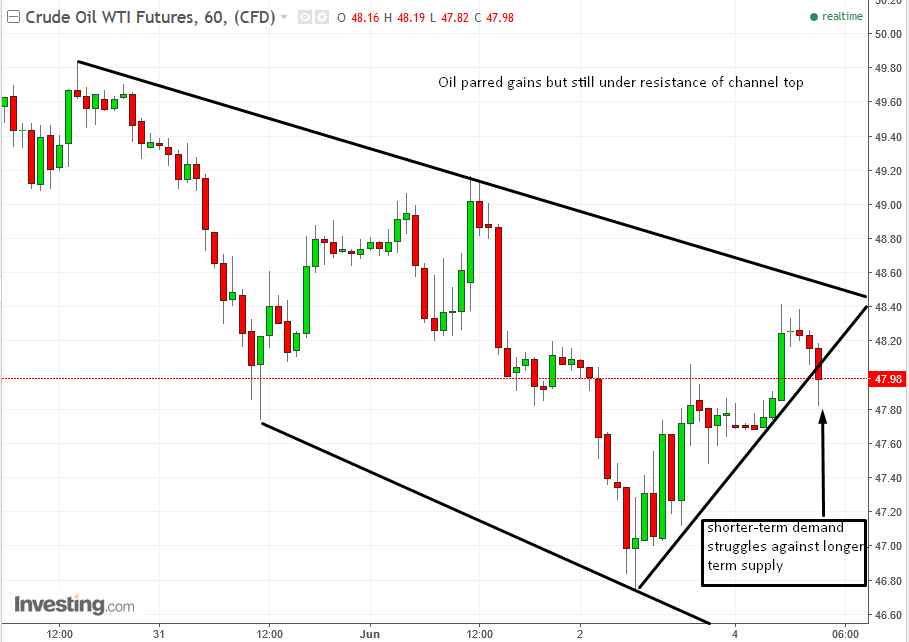
The price of oil soared this morning—after reaching a 3-week low at the weekend—after a Saudi-led alliance of Gulf States cut diplomatic relations with Qatar, the world’s biggest producer of liquefied natural gas, and as a result, one of the world’s richest countries. The alliance has accused neighboring Qatar of backing terrorism and meddling in their internal affairs.
The timing of the break may have been more than fortuitous. It comes almost immediately after the recent warming of US ties and one just day after the second UK terror attack in less than two weeks.
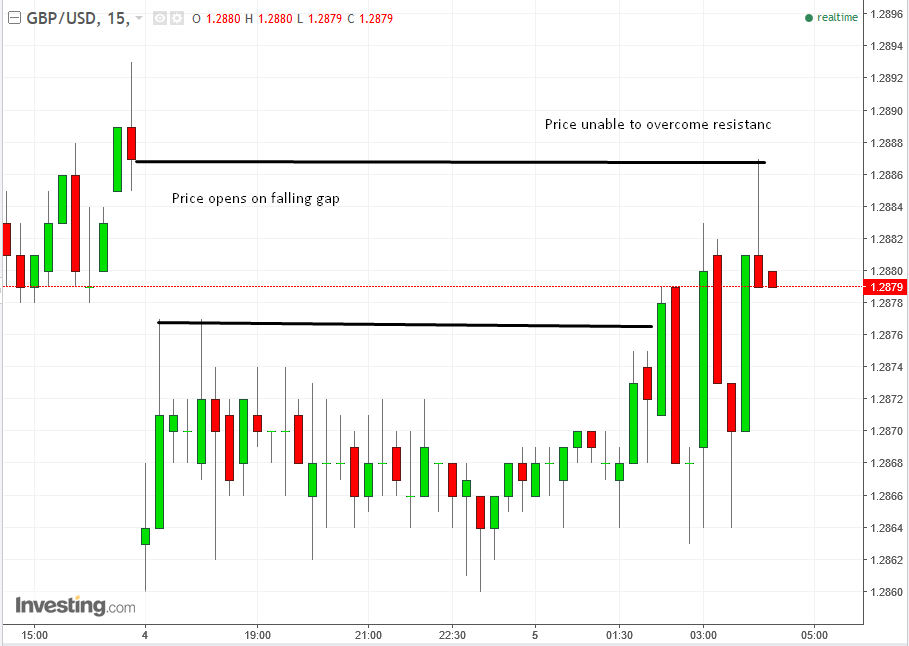
Sterling declined when FX markets opened today, after Saturday night's terror attack, when markets were closed. Additionally the UK currency may have been negatively affected by Prime Minister Theresa May’s loss of momentum in the polls, ahead of Thursday's election.
Asian stocks were mixed and European stocks opened flat, as investors grow uncertain about global growth.
Yields on Australian government bonds followed US and French government bonds to seven-month lows, while most countries’ sovereign bond yields are near their lows for the year.
Gold continued the advance it began on Friday, after a dramatically disappointing US employment report, that added to the increasing evidence of a US economic slowdown.
After contributing more than $10 trillion to global equities over the past year, investors are keenly studying the most recent US data, as they question the veracity of improving global growth. The World Bank predicts modest growth, giving investors something to hold onto amid growing uncertainty regarding monetary policy, as evidenced by bond accumulation as investors appear to be turning away from equities. There will likely be no reason to do otherwise in the next week, as Fedspeak goes silent ahead of next Wednesday'’s interest rate decision.
Events This Week
- The Trump-Russia drama kicks into higher gear when former FBI boss James Comey testifies before Congress on Thursday, June 8.
- UK general elections take place on Thursday as well, and with not-yet-elected PM Theresa May’s lead down to one percent in the polls—even after yesterday’s, second terror attack on the British homeland—her bet to gain additional legitimacy by winning an election may yet backfire.
- Policy decisions from central banks in India and Australia are due during the course of the week, as well as data on Chinese trade and inflation, U.S. factory orders, European industrial output figures and GDP reports for Australia, Japan and the euro area.
Market Moves
Commodities
- West Texas Intermediate crude advanced 1.1 percent to $48.20 a barrel as of 3:47 p.m. in Tokyo, after dropping 1.5 percent on Friday.
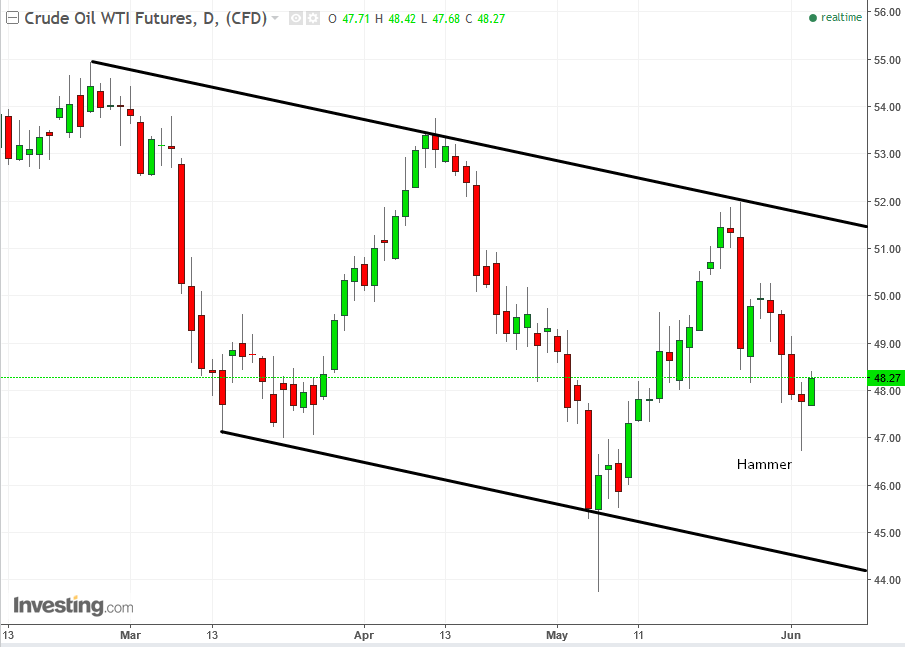
- Yesterday, oil plunged intraday, but closed near the top of the session. The commodity formed a questionable bullish hammer, meaning it didn’t close at the actual top of session, as the price was reaching the bottom of the falling channel.
- Gold resumes its 1-percent Friday-advance, rising another 0.27 percent to $1,283.70, as of 4:02 EDT.
Currencies
- The US Dollar Index is flat; it eked up 45 pips to 96.755, at 4:06 EDT
- The Japanese yen fell 0.2 percent to 110.58 per dollar. Japan’s currency climbed 0.9 percent Friday after the NFP release.
- The pound fell 0.2 percent to $1.2867.
- The euro slipped 0.1 percent to $1.1267, remaining close to the seven-month high it reached after the US jobs report.
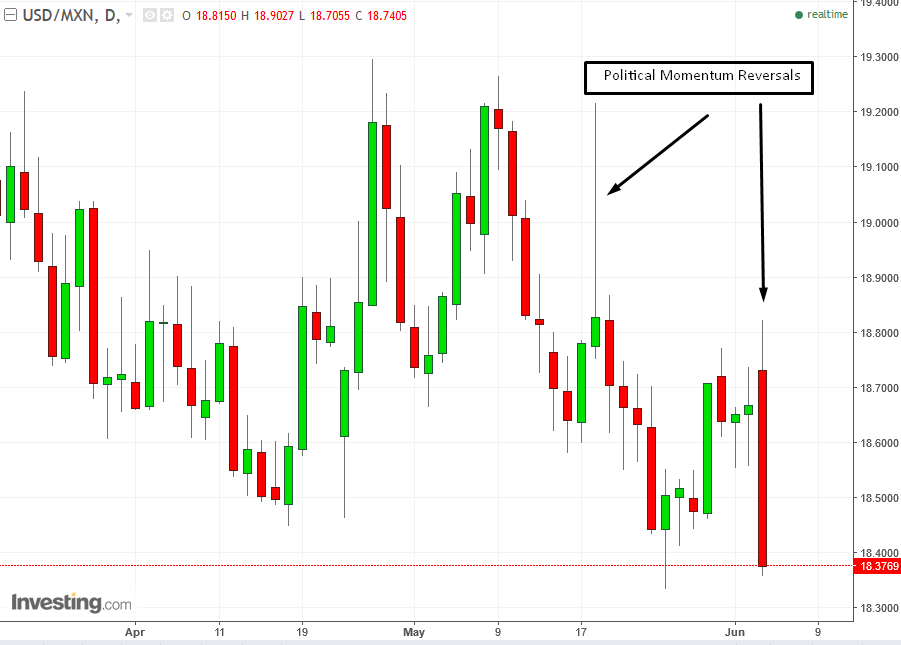
- The Mexican peso rose 1.65 percent, as of 4:08 EDT, reversing an earlier drop of 0.76 percent, forming a 2.42% daily reversal. It's the most dramatic move for the currency since May 18, when a similar political outlook generated the earlier move. Mexico's President Enrique Pena Nieto’s party is narrowly ahead in the election for governor of Mexico’s largest state in an official quick count, throwing it a lifeline ahead of next year’s general vote.
- The offshore yuan fell 0.1 percent and the onshore currency rose 0.1 percent. The PBOC set its yuan daily fix at 6.7935 per dollar, raising the rate after setting it at the strongest level since November on Friday.
Bonds
- Treasuries advanced, on the tails of Friday's disappointing US nonfarm payrolls release, driven primarily by the all-important hiring and wage growth components which are the Fed's crystal ball on the strength of the country's economic growth. The yield on US 10-year Treasury note rose less than one basis point to 2.17 percent, after dropping five basis points on Friday.
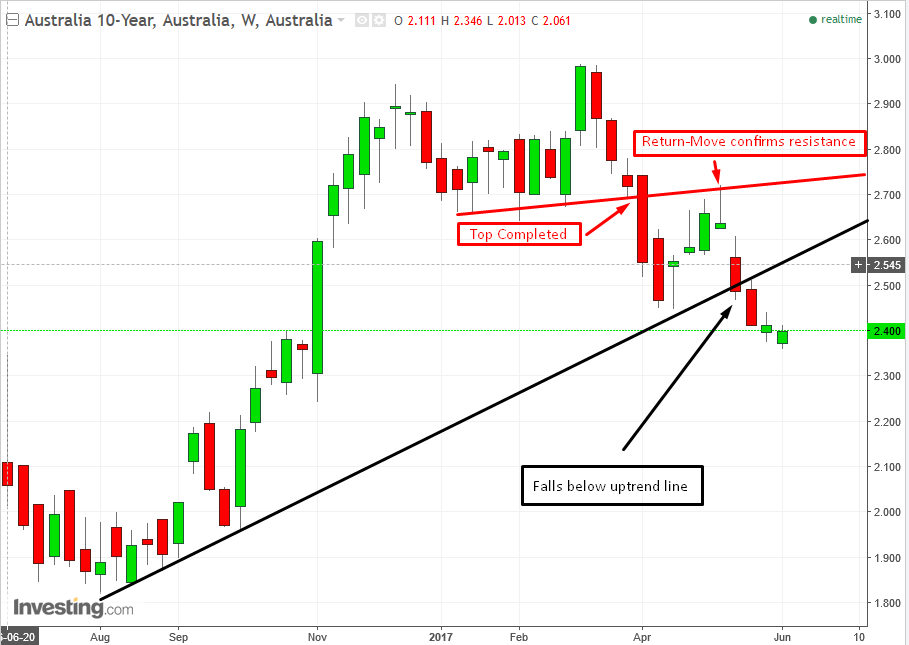
-
Australian bonds are the latest asset to join the bond feeding frenzy, after US bonds advanced post the disappointing NFP release. The yield on the Australian 10-Year government bond lost two basis point, falling to 2.39.

-
Even Japanese bonds, which on the face of it were paring losses after yen traders took profits amassed during Friday’s rally, were actually concluding a return move after completing a H&S top reversal. The top formed between December and mid-April, the same period when 10-year Treasuries completed their own Double Top reversal pattern (chart below).
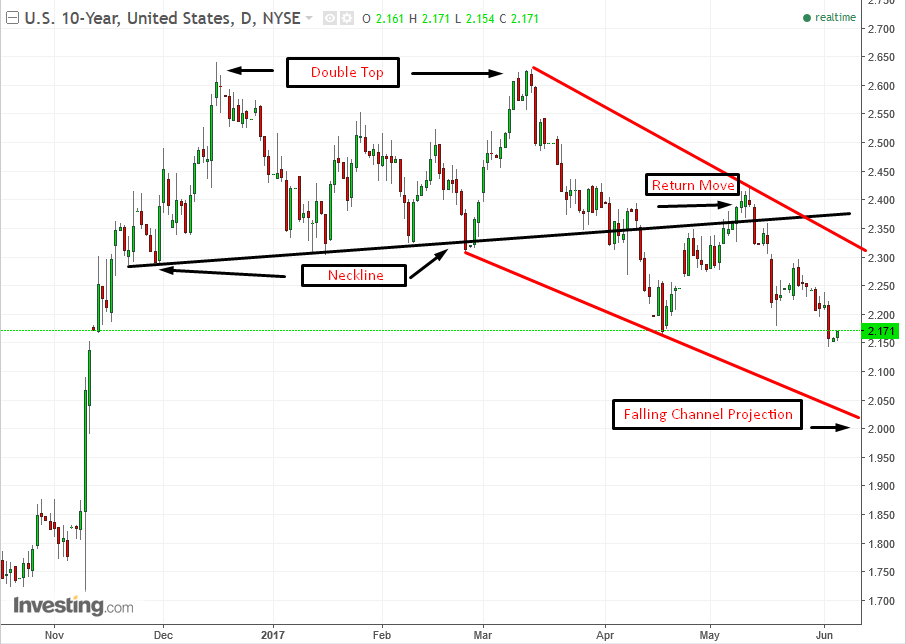
Stocks
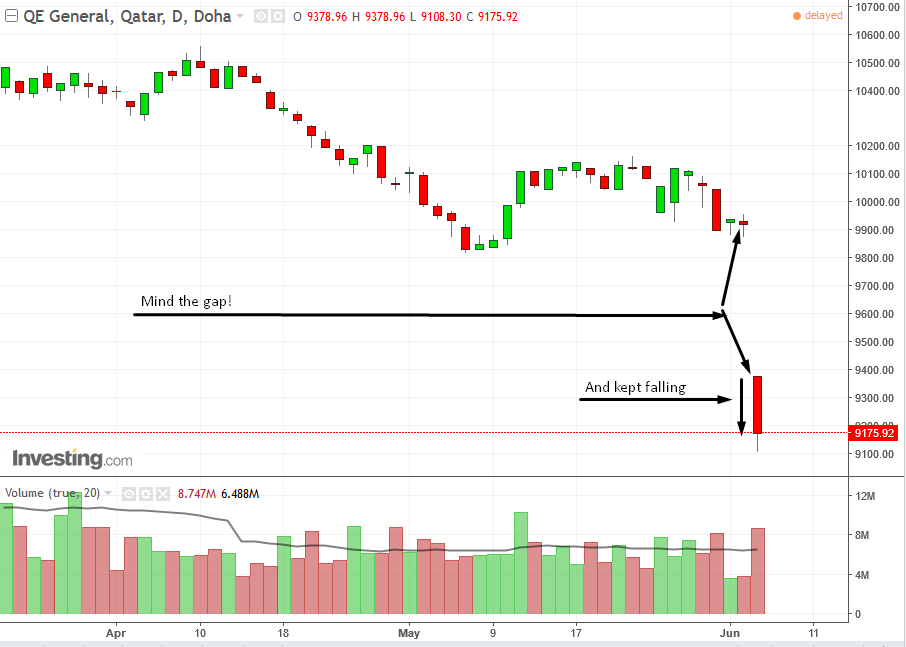
- Doha’s QE General Index dropped 7.7 percent, the most it's fallen since December 2014. Dubai’sDFM General Index fell 0.8 percent and Abu Dhabi’s ADX General Index slipped 0.3 percent, all on the escalating Gulf region tensions.
- Japan’s TOPIX fell 0.1 percent, recouping from an earlier drop of 0.6 percent. The gauge closed Friday at its highest level since August 2015.
- Hong Kong’s Hang Seng fell 0.3 percent, while China's Shanghai Composite Index slipped 0.5 percent.
- Australia’s S&P/ASX 200 Index lost 0.6 percent, led by a declining financial sector.
- Emerging-market equities were higher, with Malaysia's benchmark index gaining 0.5 percent.
- Indonesia's IDX Composite climbed 0.2 percent.
- Taiwan’s TAIEX increased by 0.7 percent.
- S&P 500 Futures fell 0.1 percent. The benchmark index gained 0.4 percent on Friday.
- The Stoxx Europe 600 Index declined 0.13 percent on Friday.
